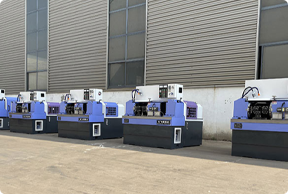
-
 Afrikaans
Afrikaans -
 Albanian
Albanian -
 Amharic
Amharic -
 Arabic
Arabic -
 Armenian
Armenian -
 Azerbaijani
Azerbaijani -
 Basque
Basque -
 Belarusian
Belarusian -
 Bengali
Bengali -
 Bosnian
Bosnian -
 Bulgarian
Bulgarian -
 Catalan
Catalan -
 Cebuano
Cebuano -
 Corsican
Corsican -
 Croatian
Croatian -
 Czech
Czech -
 Danish
Danish -
 Dutch
Dutch -
 English
English -
 Esperanto
Esperanto -
 Estonian
Estonian -
 Finnish
Finnish -
 French
French -
 Frisian
Frisian -
 Galician
Galician -
 Georgian
Georgian -
 German
German -
 Greek
Greek -
 Gujarati
Gujarati -
 Haitian Creole
Haitian Creole -
 hausa
hausa -
 hawaiian
hawaiian -
 Hebrew
Hebrew -
 Hindi
Hindi -
 Miao
Miao -
 Hungarian
Hungarian -
 Icelandic
Icelandic -
 igbo
igbo -
 Indonesian
Indonesian -
 irish
irish -
 Italian
Italian -
 Japanese
Japanese -
 Javanese
Javanese -
 Kannada
Kannada -
 kazakh
kazakh -
 Khmer
Khmer -
 Rwandese
Rwandese -
 Korean
Korean -
 Kurdish
Kurdish -
 Kyrgyz
Kyrgyz -
 Lao
Lao -
 Latin
Latin -
 Latvian
Latvian -
 Lithuanian
Lithuanian -
 Luxembourgish
Luxembourgish -
 Macedonian
Macedonian -
 Malgashi
Malgashi -
 Malay
Malay -
 Malayalam
Malayalam -
 Maltese
Maltese -
 Maori
Maori -
 Marathi
Marathi -
 Mongolian
Mongolian -
 Myanmar
Myanmar -
 Nepali
Nepali -
 Norwegian
Norwegian -
 Norwegian
Norwegian -
 Occitan
Occitan -
 Pashto
Pashto -
 Persian
Persian -
 Polish
Polish -
 Portuguese
Portuguese -
 Punjabi
Punjabi -
 Romanian
Romanian -
 Russian
Russian -
 Samoan
Samoan -
 Scottish Gaelic
Scottish Gaelic -
 Serbian
Serbian -
 Sesotho
Sesotho -
 Shona
Shona -
 Sindhi
Sindhi -
 Sinhala
Sinhala -
 Slovak
Slovak -
 Slovenian
Slovenian -
 Somali
Somali -
 Spanish
Spanish -
 Sundanese
Sundanese -
 Swahili
Swahili -
 Swedish
Swedish -
 Tagalog
Tagalog -
 Tajik
Tajik -
 Tamil
Tamil -
 Tatar
Tatar -
 Telugu
Telugu -
 Thai
Thai -
 Turkish
Turkish -
 Turkmen
Turkmen -
 Ukrainian
Ukrainian -
 Urdu
Urdu -
 Uighur
Uighur -
 Uzbek
Uzbek -
 Vietnamese
Vietnamese -
 Welsh
Welsh -
 Bantu
Bantu -
 Yiddish
Yiddish -
 Yoruba
Yoruba -
 Zulu
Zulu
best types of thread rolling machine
Best Types of Thread Rolling Machines
Thread rolling is a widely used manufacturing process that improves the strength and accuracy of metal fasteners. Unlike traditional cutting methods that can weaken the material, thread rolling forms threads by displacing metal, resulting in stronger, more durable components. To achieve optimal results, selecting the right type of thread rolling machine is crucial. In this article, we will explore the best types of thread rolling machines based on various factors such as production requirements, material types, and operational efficiency.
1. Flat Die Thread Rolling Machines
Flat die thread rolling machines are one of the most common types used in manufacturing. They employ two flat dies that are placed against the workpiece, where the threads are formed through a combination of linear movement and rotational motion. This design is particularly effective for producing external threads on cylindrical components.
Advantages - Versatility in thread profiles – Flat die machines can accommodate different thread designs with ease. - Suitable for various materials, including steel, aluminum, and brass. - High efficiency for medium to large batch production.
Disadvantages - Limited to external thread forming. - Requires precise setup and alignment, which can be time-consuming.
2. Circular Thread Rolling Machines
Circular thread rolling machines, sometimes referred to as planetary machines, employ a series of rotating cylindrical dies to create threads. This configuration allows multiple workpieces to be processed simultaneously. These machines are ideal for high-volume production, making them a favorite in fastener manufacturing.
Advantages - High production rates due to simultaneous processing of multiple parts. - Consistent quality with minimal variations in thread dimensions. - Suitable for different thread types and sizes.
Disadvantages - Higher initial investment compared to flat die machines. - More complex setup and maintenance procedures.
3. Cross-Roll Thread Rolling Machines
Cross-roll thread rolling machines use a unique approach that combines rotational and linear movements. The workpiece is fed between two rolls that intersect, allowing threads to be rolled without requiring a specific alignment. This method is particularly effective for producing threaded pins and bolts.
best types of thread rolling machine

Advantages - Produces high-strength threads with excellent tolerances. - Can accommodate varying thread pitches and diameters. - Less material wastage compared to traditional cutting methods.
Disadvantages - Typically more expensive than flat die machines. - Requires skilled operators for setup and adjustments.
4. Micro Thread Rolling Machines
As industries move towards smaller, highly specialized components, micro thread rolling machines are gaining popularity. These machines are designed to produce miniaturized threads used in applications such as electronics, medical devices, and precision instruments.
Advantages - Capable of producing fine threads with high accuracy. - Ideal for small batch production where precision is paramount. - Provides flexibility to adjust thread profiles with minimal downtime.
Disadvantages - Slower production rates compared to larger machines. - Higher operational costs due to specialized tooling.
5. Automated Thread Rolling Machines
The advent of automation in manufacturing has led to the development of automated thread rolling machines. These machines integrate advanced software and robotics to streamline the thread rolling process. They are capable of handling complex production schedules with minimal operator intervention.
Advantages - Increased efficiency and reduced labor costs. - Enhanced precision through automated controls. - Ability to monitor and adjust processes in real-time.
Disadvantages - Higher initial cost due to technology integration. - Dependence on operational software which may require necessary training.
Conclusion
Choosing the right type of thread rolling machine plays a significant role in determining manufacturing efficiency, product strength, and overall cost-effectiveness. Each type has its own set of advantages and disadvantages, making it essential to evaluate production needs, materials, and budget constraints carefully. Whether opting for flat die, circular, cross-roll, micro, or automated machines, understanding these differences can lead to better decision-making in the manufacturing sector. By investing in the appropriate machinery, manufacturers can enhance their production capabilities and ensure the quality of their threaded components.
